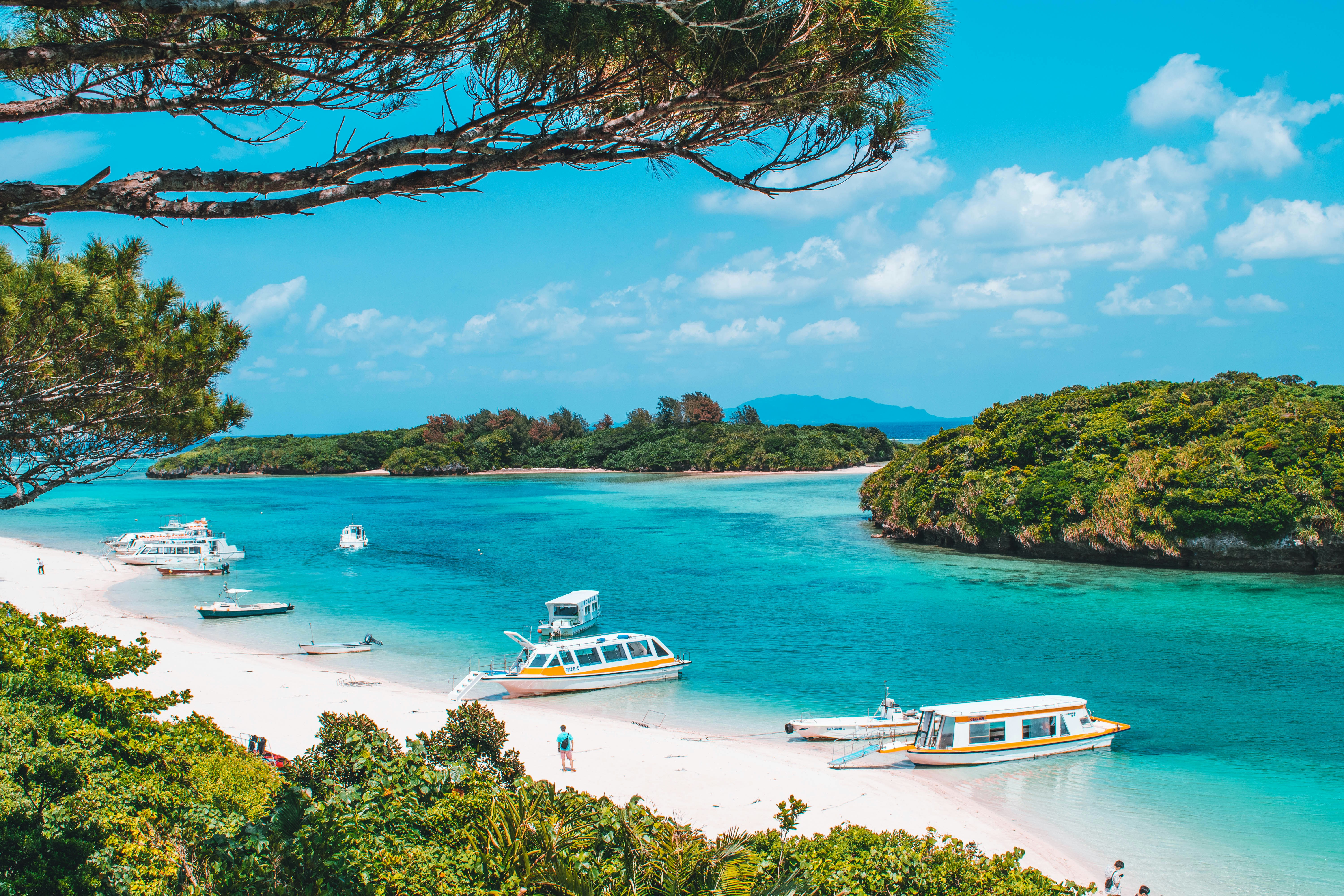Okinawa Resort Meetings Playbook
Author
Shun
Date Published

Planning a hybrid incentive conference in Okinawa demands precision that matches its beauty. The island’s resort venues deliver spectacular beachfront views but also operate under unique environmental, weather, and transport restrictions.
Unlike Tokyo or Osaka, every outdoor reception here involves tide charts, curfews, and coastal permits. Planners must account for curfews, weather disruptions, transport limits, and marine licensing long before contracts are signed. Each of these elements shapes how schedules, budgets, and contingency plans are built, making operational awareness the foundation of every successful resort meeting.
This playbook explains how to navigate those realities step by step. It shows how to balance incentive creativity with regulatory discipline, from scheduling around typhoons to managing resort curfews, transport bottlenecks, and marine safety requirements. Each topic follows the same operational sequence that planners use on-site: preparation, contracting, coordination, and compliance.

Seasonality & Typhoon Considerations
Event timing in Okinawa defines both budget and risk. The island’s subtropical climate keeps temperatures mild year-round, but typhoon season from late July to early October can reshape arrival plans within hours. Conference planners must treat weather not as an obstacle but as a controllable operational variable. Weather patterns influence not only venue readiness but also the timing and feasibility of outdoor incentive components, making seasonality central to hybrid event success.
Most successful programs run between late March and early July or late October to December, when airfares stabilize and the chance of major disruption falls below 10 percent.
Key points:
- Typhoon patterns are tracked by the Japan Meteorological Agency, which updates alerts every six hours.
- Airlines issue penalty-free rebookings once official warnings are posted.
- Venues maintain emergency response manuals approved by local authorities.
- Indoor backup halls within resort clusters can typically be secured for no extra fee if booked early.
Checklist for planners:
I include a clause stating that the venue must offer an equivalent indoor space at no additional cost if the outdoor function becomes unsafe due to government weather advisories. Planners should run a full-day weather simulation two weeks prior to the event using local forecasts and confirm fallback timing with catering and AV suppliers.
Beachfront Venue Policies and Curfews
Every beachfront venue in Okinawa operates under environmental management laws that protect public coastline use. Outdoor setups require strict adherence to curfew and decibel limits, with most resorts closing outdoor amplified activity by 9:30 p.m. This affects gala dinners, fireworks, and live entertainment schedules.
Ignoring curfew constraints can result in sudden permit withdrawals or penalties, so all timing and noise clauses must be formalized before signing the Banquet Event Order.
Key points:
- Fireworks and pyrotechnics require advance application at least 14 days in advance through the local tourism office.
- Beach installations must maintain three-meter clearance from public access zones.
- Lanterns and drone photography require separate safety submissions.
- Caterers must provide waste management and post-event cleanup certification.
Checklist for planners:
I add a clause in every outdoor-use contract requiring the resort to disclose all curfew and sound restrictions before finalizing the event schedule. Planners should align gala dinners and evening programs within curfew windows and design thematic transitions that conclude before the 9:30 p.m. cutoff.

Charter Bus Constraints and Parking Rules
Smooth ground transport is what keeps Okinawa’s split-format programs on rhythm, connecting conference sessions with resort experiences without fatigue or delays. Okinawa’s resorts are linked by scenic but narrow coastal roads, which limits vehicle maneuverability. Large coaches face access challenges, particularly at northern resort zones such as Onna and Nago. Transfers between Naha and resort areas can exceed 90 minutes, requiring disciplined scheduling.
Planners should treat transport planning as a sequencing exercise where arrivals, meal slots, and session start times align with the physical limits of the road network.
Key points:
- Most resorts accommodate only two full-size coaches at once.
- Staggered bus arrival windows reduce driveway congestion.
- Parking manifests are required 72 hours before arrival.
- Drivers are subject to local curfew rules and cannot idle past 11 p.m.
Checklist for planners:
I always include a clause requiring resorts to provide written confirmation of maximum coach dimensions, turning clearances, and accessible loading bays at least one month before the event. Planners should brief logistics teams on turnaround time per transfer and test a full passenger cycle 24 hours before delegate arrival.
Marine Activity Permits & Safety Standards
Marine excursions such as snorkeling, diving, and boat charters are the highlight of Okinawa incentive programs. These activities fall under Okinawa Prefectural Marine Safety Regulations and the Japan Coast Guard Maritime Recreation Code. Only licensed operators may conduct marine programs for paying groups.
Foreign planners are often unaware that liability extends to the contracting entity, meaning if a supplier is unregistered, the event host assumes full responsibility. Every operator must therefore provide documentation proving legal registration and valid insurance.
Key points:
- Certified instructors and bilingual safety briefings are mandatory.
- Alcohol consumption before or during water activities voids insurance coverage.
- Life jackets and emergency rafts must meet Japan Industrial Standards.
- All tours must submit participant rosters to the Coast Guard before departure.
Checklist for planners:
I include a clause that all marine operators must submit valid license and liability insurance certificates at least 14 days before service commencement and that failure to comply authorizes immediate substitution at the supplier’s cost. Planners should assign one safety liaison to accompany every group and record the start and end times for each marine program for audit compliance.

Sample 3-Day Incentive Agenda with Costs
This model demonstrates how to structure hybrid budgets that protect against weather, permit, and marine variables unique to Okinawa’s coastal operations.
While urban events in Tokyo or Osaka revolve around hall rentals and AV line items, Okinawa budgets center on all-inclusive resort packages, local permits, and transfer logistics between airport, resort, and offsite venues. The most successful planners earmark contingency funds for alternate indoor setups and typhoon-related delays rather than overinvesting in décor or entertainment.
Category | Description / Coverage | Estimated Cost (JPY) |
|---|---|---|
Indoor Conference Block | Ballroom hire, AV, interpretation, Wi-Fi, meeting staff (Day 2 morning) | ¥1.8 M |
Outdoor Functions | Welcome dinner, gala setup, beach permits, power supply, lighting | ¥3.8 M |
Accommodation & Meals | 2 nights, 150 participants, including breakfast and coffee breaks | ¥6.0 M |
Marine & Cultural Programs | Snorkeling, CSR workshop, safety supervision, insurance | ¥1.0 M |
Transport & Logistics | Airport transfers, shuttles, baggage handling, staff meals | ¥0.9 M |
Weather Contingency Reserve | Indoor backup space, rebooking fees, typhoon delay buffer | ¥0.6 M |
Total Estimated Budget (3 days) | ¥14.1 M |
Operational insight:
Outdoor line items often represent 25–30 percent of the total spend but carry the highest exposure risk. Backup halls and safety coverage cost less upfront yet prevent major reissuance or cancellation losses. When marine or CSR components are included, planners should confirm that all supplier insurance and licensing fees are reflected in their proposals to avoid last-minute add-ons.
Checklist for planners:
I add a clause requiring all quoted rates to remain valid for 60 days and mandating that any schedule shifts caused by official weather advisories carry forward at the same contracted rates. Planners should reconcile actual spend against the master cost sheet within 24 hours of event close to capture refunds, adjustments, and supplier compliance.
FAQs
1. When is the safest period to schedule a resort event in Okinawa?
Late March to early July and late October to December provide stable weather, moderate hotel rates, and low typhoon risk.
2. Can outdoor banquets extend past curfew if held on private beaches?
Only if the beach is fully owned by the resort and has explicit night-use permits; otherwise curfews remain legally binding.
3. Are there bilingual emergency teams for marine activities?
Yes. Licensed operators must have English-speaking lifeguards and Coast Guard-certified instructors.
4. How can planners reduce transport bottlenecks for large groups?
Divide groups by arrival time and vehicle size, and always test drive the route with the logistics manager before delegate movement.
5. What backup measures work best during typhoon season?
Keep indoor halls reserved under the same booking and secure flexible air tickets that allow one-day rescheduling without penalty.
Conclusion
Running a resort meeting in Okinawa requires balancing incentive creativity with procedural discipline. Once planners align timing, curfews, logistics, and marine safety within compliant frameworks, execution becomes smooth and delegate experience seamless. The island rewards early coordination, local supplier verification, and clear contractual clauses more than any other Japanese destination.
Planners preparing 2025 events should finalize venue selections at least six months ahead, confirm all marine permits a month prior, and document all curfew and transport limitations in their master event sheet to achieve both compliance and cost control. To receive comparative resort schedules and cost frameworks for review contact us.